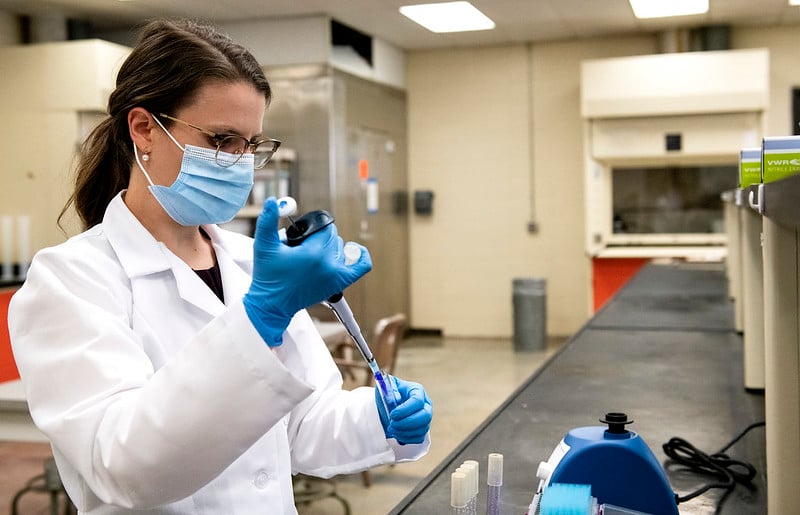HACCP (Hazard Analysis Critical Control Point) is a modern-day food-safety system which is mandated for food-processing plants in the U.S. Because of its unique structure, it is also used by a vast number of restaurants around the globe.
In the U.S. the first federal regulations on food came in 1906, when Congress passed the Pure Food and Drug Act which gave birth to the agency now known as the FDA (Food and Drug Administration). In the decades since, our food regulations and standards have evolved to reflect the times and new food issues that have arisen. HACCP is our most current form of food safety regulations.
What exactly is the HACCP? Why do restaurants and other food-industry businesses choose to self-regulate by following their own HACCP plans? How can you develop your own HACCP plan?
Let’s explore the history and concepts of the HACCP and how it has been adopted.
What is HACCP?
Hazard Analysis Critical Control Point sounds like something that Sulu would tell Captain Kirk they’ve reached on Star Trek. However, in reality, it’s a great tool to protect consumers from severe illness — or even death — from food-borne pathogens. The HACCP analyzes biological, chemical, and physical hazards of food production, from slaughterhouses to manufacturing, through distribution all the way to consumption.
HACCP also provides a way to implement plans to control and protect against these hazards.
A Brief History of the HACCP
The earliest days of the HACCP began with an unlikely collaboration between Pillsbury and NASA (National Aeronautics and Space Administration) in the 1960s. A project between the two aimed to extend the shelf life of pathogen-free food to give astronauts food in space. Although the strict standards NASA placed on pathogens couldn’t be maintained in commercially-produced food, the government realized that consumer-purchased food should require pathogen testing.
The importance of an HACCP plan was then introduced to the food industry at the first National Conference for Food Protection in 1971. Pillsbury offered instruction to FDA inspectors soon after, and many food industry leaders became familiar with the HACCP concept. In 1995, the FDA officially introduced HACCP to the seafood industry, and in 1996, HACCP became a U.S. regulatory requirement for meat and poultry processing and packaging plants.
The Seven Principles of HACCP
HACCP consists of seven principles which help guide those who implement HACCP plans, while still allowing them to tailor their plan to their specific businesses within the food industry. The seven HACCP principles are as follows:
1. Conduct a Hazard Analysis
This principle allows management to identify where hazards to food safety are in their (respective) place.
2. Determine Critical Control Points
This is the principle that highlights the most critical needs for control of a food safety hazard or violation. Identifying all issues before implementing a plan will make the correction plan more effective.
3. Establish Critical Limits
By establishing and monitoring critical limits, food workers and management can ascertain whether or not procedures are working. Corrections can be made frequently to stay within HACCP regulations.
4. Establish Monitoring Procedures
If critical limits are reached, step-by-step monitoring procedures should already be in place to correct these missteps quickly. For example, if a thermostat on a meat locker breaks, there should already be a plan in place to move meat to a second location. If there’s not a second location, the meat should be discarded. By delegating an employee to monitor the thermostat every hour, the problem can be addressed immediately.
5. Establish Corrective Actions
How can critical limits be avoided? Management should have specific corrective actions in place for anticipated critical limits.
6. Establish Verification Procedures
This principle can determine the validity of an HACCP plan by ensuring all seven principles are adhered to and that the HACCP system in place works to correct any food safety issues.
7. Establish Record-Keeping and Documentation Procedures
Daily record and document all steps in your HACCP plan as they’re taken. Trends in critical limits reached can show you where you need to improve your plan. Keep a detailed description of all food distribution and intended use.
Other Countries That Use HACCP for Food Safety
Internationally, HACCP is implemented as a mandatory or suggested food safety regulation in many countries. Countries other than the U.S. that now utilize HACCP regulations include:
- Australia
- China
- European Union nations
- Hong Kong
- Iran
- Japan
- Mexico
- Pakistan
- Saudi Arabia
- South Korea
- Taiwan
- Thailand
- United Emirates
HACCP Certification
Upper management in the food industry receives HACCP food safety training first, and then passes knowledge, an HACCP plan, and implementation to employees. All food industry management members can go through the HACCP certification process.
Although HACCP plans are required in the food industry, not all industry businesses require HACCP certification. Seafood businesses, for example, do require it. Accredited third-party food service auditors offer certification and certification remains valid for three years. (You can find a list of FDA approved third-party certification here).
The Food Industry and HACCP
The food industry has largely embraced the principles of HACCP, as the system allows businesses to self-regulate within a rigorous framework. HACCP also allows businesses to discern where their food safety issues may lie and take proactive steps to correct hazards. The HACCP principles create an easy-to-follow outline for businesses to create actionable plans.

How to Develop an HACCP Plan
Follow the seven HACCP principles to create a HACCP plan. For example, in a restaurant, an HACCP plan may look something like this:
- Conduct an analysis of the areas in your restaurant which may encounter the most food safety issues (salad stations, meat prep areas, walk-in cooler arrangements, and bar fruit and garnish trays are great places to start).
- Determine the critical, hazardous points in your establishment (for example, perhaps the thermostat on your walk-in often breaks or food is often improperly stored).
- Set your critical limits (for instance, mandate that all meat must be cooked to an internal temperature of 165 degrees fahrenheit).
- Establish monitoring procedures so you can readily identify where, how, and when a hazard is created. (If every time Mike works, poultry is left on a prep table for hours after defrosting and must be discarded, Mike may need further HACCP instruction).
- Create a corrective action guide. Foresee issues that may arise, and establish steps to correct future hazards.
- Verify your system works. Do the steps you have in place allow you to prevent and correct hazards and critical points?
- Have a documentation system in place. For example, keep a daily log of when food is rotated and of freezer temperatures, with date and time recorded and initialed by employees.
HACCP helps support restaurants, food-processing operations, and food distributors to adhere to critical food safety procedures. In turn, these businesses can succeed with confidence that they’re protecting their consumers.
Beyond halal certification, Mohammad also explores intersections of Islamic finance and ethical business, bringing a holistic Shariah-based lens to organizational governance. He also holds executive roles across multiple industries, including clinical research, quality assurance, international food trading, education, and investment management.
At AHF, Mohammad has led initiatives to streamline the halal certification process, develop audit tools for integrated compliance (e.g., Halal + SQF, GMP, Gluten-Free, etc), and coordinate AHF’s expanding certification footprint across industries like cosmetics, nutraceuticals, and industrial chemicals.
Mohammad’s work exemplifies a commitment to excellence, transparency, and efficiency—core values that align with AHF’s global mission of ensuring halal integrity.




